Honshu Island, Japan: Unveiling the Heart of the Rising Sun
Honshu Island Guide: Japan's Dynamic Mainland Explored
Uncover the beauty and secrets of Honshu Island, Japan. Explore its rich history, attractions, and natural wonders. Plan your trip now!
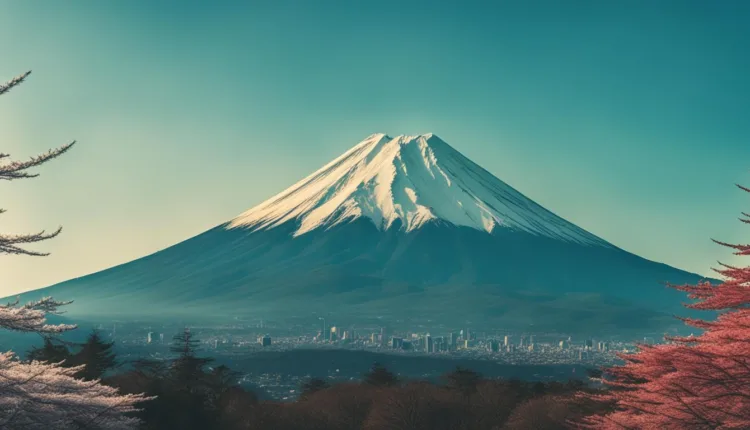
Welcome to Honshu Island, the largest and most captivating Japanese island, bordered by the Tsugaru Strait, nestled within a megalopolis and home to numerous prefectures and the scenic Inland Sea. With its diverse range of geographic features, from the iconic Mount Fuji to bustling cities like Tokyo, Kyoto, and Hiroshima, Honshu Island is a treasure trove of tourist destinations, cultural landmarks, natural wonders, and picturesque prefectures. This area, encompassing an inland sea and attracting travellers worldwide, offers an unparalleled experience for every visitor. Join me on this travel guide as we delve into the heart of Japan and discover the enchanting beauty that awaits travellers in this prefecture and area.
Key Takeaways:
-
Honshu Island, the largest in the Japanese prefecture system, offers a myriad of attractions across its vast area with a dense population within its many square miles (mi).
-
Geographic features like Mount Fuji add to the island’s natural beauty.
-
Cities such as Tokyo, Kyoto, and Hiroshima are must-visit destinations with intriguing land to explore.
-
From cultural landmarks to natural wonders, Honshu has something for every traveler.
-
This travel guide will provide insights and recommendations for an unforgettable trip.
Discovering the Diversity of Japan
Japan is a country composed of a diverse collection of islands, each with its own unique charm. As a traveler, it’s important to understand the geographical and cultural differences among these islands in order to make the most of your trip. The four main islands of Japan are Honshu, Hokkaido, Kyushu, and Shikoku. While our focus in this guide is on Honshu, exploring the other islands can provide a well-rounded understanding of Japan’s cultural and natural wonders.
Each of these islands offers a distinct experience. Honshu, being the largest and most populous, is known for its vibrant cities like Tokyo, Kyoto, and Osaka. Hokkaido, in contrast, boasts stunning natural landscapes and is famous for its hot springs and fresh seafood. Kyushu, the southernmost of the four main islands, offers a mix of beautiful beaches, volcanoes, and historic sites. Shikoku, on the other hand, is known for its tranquil countryside and pilgrimage routes.
By exploring these different regions, you’ll get a taste of the diverse beauty and culture that Japan has to offer. From modern metropolises to serene landscapes, Japan’s islands will captivate you at every turn. Whether you prefer bustling city life or serene nature, there’s something for everyone in this fascinating country.
The Four Main Islands of Japan
| Island | Main Cities | Key Features |
|---|---|---|
| Honshu | Tokyo, Kyoto, Osaka | Largest and most populous island, vibrant cities, cultural landmarks |
| Hokkaido | Sapporo, Hakodate | Nature, hot springs, fresh seafood |
| Kyushu | Fukuoka, Nagasaki, Kumamoto | Beaches, volcanoes, historic sites |
| Shikoku | Takamatsu, Matsuyama | Countryside, pilgrimage routes |
Each island has its own unique attractions and cultural highlights. By exploring the diverse collection of islands, you’ll gain a deeper appreciation for the rich tapestry that is Japan.
Honshu: The Heart of Japan
Honshu, the largest island in Japan, is a vibrant destination that seamlessly blends tradition and modernity. Home to iconic cities like Tokyo, Kyoto, and Osaka, Honshu offers a captivating mix of ancient temples and futuristic skyscrapers. Explore the rich cultural heritage and indulge in the region’s diverse culinary scene for an unforgettable experience.
When visiting Honshu, make sure to immerse yourself in the ancient temples that dot the landscape. From the serene beauty of Kyoto’s Kiyomizu-dera temple to the remarkable architecture of Tokyo’s Senso-ji temple, each site holds its own unique charm. Experience the spiritual atmosphere and gain insight into Japan’s rich history and traditions.
As you wander through the vibrant cities of Honshu, you’ll encounter a mesmerizing blend of traditional and contemporary elements. Marvel at the futuristic skyscrapers of Tokyo’s Shibuya district, where cutting-edge technology meets bustling city life. Discover the vibrant nightlife in Osaka, known for its energetic entertainment districts. And don’t forget to sample the mouthwatering cuisine that Honshu is famous for, from sushi in Tokyo to street food in Osaka.
With its diverse attractions and central location, Honshu serves as an ideal starting point for exploring Japan. From the ancient temples of Kyoto to the bustling streets of Tokyo, this captivating island offers a wealth of experiences for travelers seeking to uncover the heart of Japan.
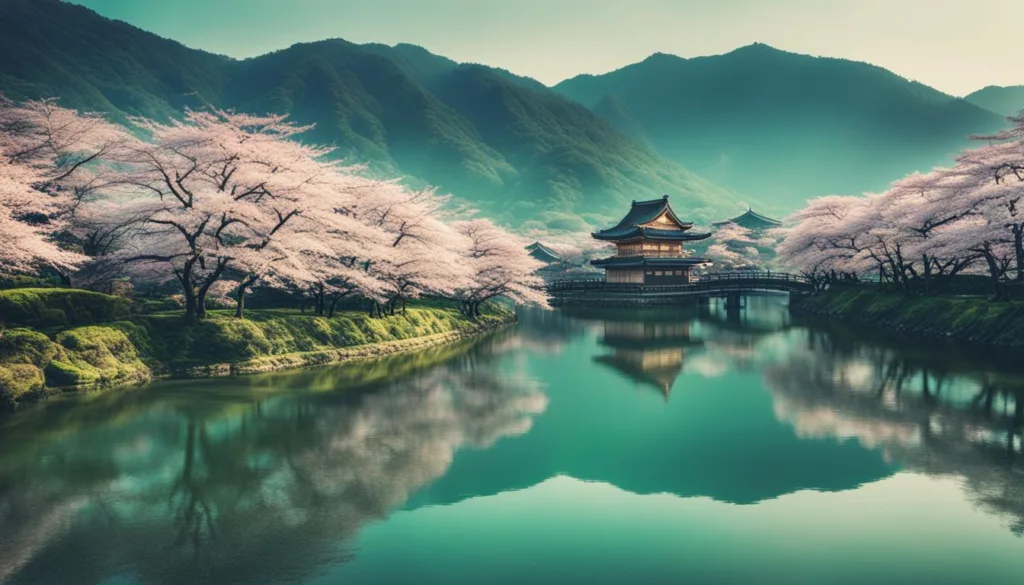
Table: Top Cities to Visit in Honshu
| City | Highlights |
|---|---|
| Tokyo | Futuristic skyscrapers, traditional temples, vibrant street life |
| Kyoto | Ancient temples, serene gardens, geisha districts |
| Osaka | Exquisite cuisine, vibrant nightlife, historic castle |
| Hiroshima | Peace Memorial Park, Itsukushima Shrine, historic sites |
Embark on a journey to Honshu, and let this captivating island immerse you in the heart of Japan’s cultural and modern wonders.
Seasons in Japan: The Art of Timing
Japan is known for its four distinct seasons, each offering its unique charm and experiences. Understanding the timing of your trip can greatly enhance your visit to this beautiful country. Here’s a guide to the seasons in Japan and the highlights they bring:
Cherry Blossom Season – Spring
Spring is a magical time in Japan when cherry blossoms, known as sakura, paint the landscapes in soft hues of pink and white. From late March to early May, parks, gardens, and streets are adorned with these delicate flowers, creating breathtaking scenes. The cherry blossom season is a symbol of renewal and the start of new beginnings. It’s the perfect time to explore parks like Tokyo’s Shinjuku Gyoen and Kyoto’s Maruyama Park and indulge in traditional hanami (flower-viewing) picnics under the blooming trees.
Summer Festivals
Summer, from June to August, is a vibrant season in Japan filled with lively festivals known as matsuri. These festivals celebrate everything from traditional culture to food, music, and fireworks. One of the most famous summer festivals is the Gion Matsuri in Kyoto, featuring stunning processions and traditional performances. Other notable events include the Tanabata Festival in Sendai, the Nebuta Festival in Aomori, and the Awa Odori Dance Festival in Tokushima. The summer months are also a great time to relax on the beautiful beaches of Okinawa and enjoy the warm weather.
Autumn Foliage
Autumn, from September to November, transforms Japan into a canvas of vibrant colors as the leaves change into shades of red, orange, and gold. The autumn foliage, known as koyo, is a visual spectacle that attracts visitors from around the world. Popular destinations for autumn foliage include Nikko, Nara, and the mountainous regions of Hokkaido and Tohoku. The stunning foliage creates a stunning backdrop for hiking, photography, and enjoying the peacefulness of nature.
Winter Activities
Winter, from December to February, offers a different kind of beauty in Japan. Snow-covered landscapes, hot springs, and winter sports make it a favorite season for many. Areas like Hokkaido and the Japanese Alps receive abundant snowfall and are perfect for skiing, snowboarding, and snowshoeing. Onsen (hot spring) resorts offer a cozy retreat to relax and unwind in steaming outdoor baths. Winter illuminations, such as the famous displays in Tokyo and Osaka, add a touch of enchantment to the season.
| Season | Highlights |
|---|---|
| Spring | Cherry blossom season |
| Summer | Festivals and beach time in Okinawa |
| Autumn | Spectacular foliage and peaceful hiking |
| Winter | Snow activities and relaxing hot springs |
Plan your trip to Japan wisely to make the most of its ever-changing beauty throughout the seasons. Whether you want to witness the ephemeral beauty of cherry blossoms, immerse yourself in the energy of summer festivals, admire the colors of autumn foliage, or indulge in winter activities, Japan has something to offer all year round.
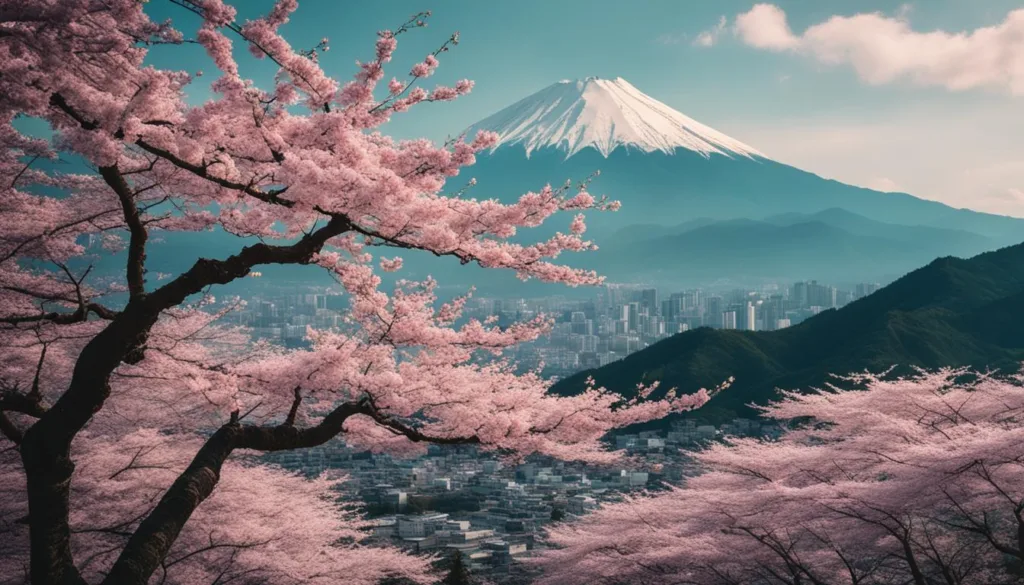
Cultural Etiquette: Navigating Japanese Traditions
When traveling to Japan, it is essential to familiarize yourself with the country’s cultural etiquette to ensure a respectful and positive experience. Japanese customs and traditions reflect a deep sense of respect and harmony. Here are some key aspects of Japanese cultural etiquette to keep in mind:
-
Bowing: Bowing is an integral part of Japanese culture and is used as a form of greeting, showing gratitude, and expressing respect. To properly bow, stand straight, bend at the waist, and maintain eye contact. The depth and duration of the bow depend on the situation and the person you are interacting with.
-
Shoes off indoors: The Japanese practice of removing shoes when entering a home, traditional inn (ryokan), temple, or certain restaurants is a sign of cleanliness and respect. Look for a designated area or shoe rack near the entrance to leave your shoes. It is customary to wear slippers provided by the establishment inside.
-
Onsen etiquette: Onsens, or traditional hot springs, are popular in Japan. When visiting an onsen, be sure to wash your body thoroughly before entering the bath. Tattoos are generally not allowed in public baths due to their association with organized crime. However, some onsens offer tattoo-friendly options.
-
Respect for elders: Japanese culture places great importance on respect for older individuals. Use appropriate honorific titles, such as “-san” after someone’s name, to show respect. Avoid addressing someone by their first name unless given permission to do so.
“Respecting Japanese customs and traditions is crucial when visiting the country. By observing proper bowing, removing shoes indoors, following onsen etiquette, and showing respect for elders, you can navigate Japanese traditions with ease and show appreciation for the culture.”
Understanding and practicing these cultural etiquettes will not only enhance your cultural experience in Japan but also foster positive interactions with locals. By immersing yourself in Japanese customs, you can gain a deeper appreciation for the country’s rich heritage and create lasting memories.
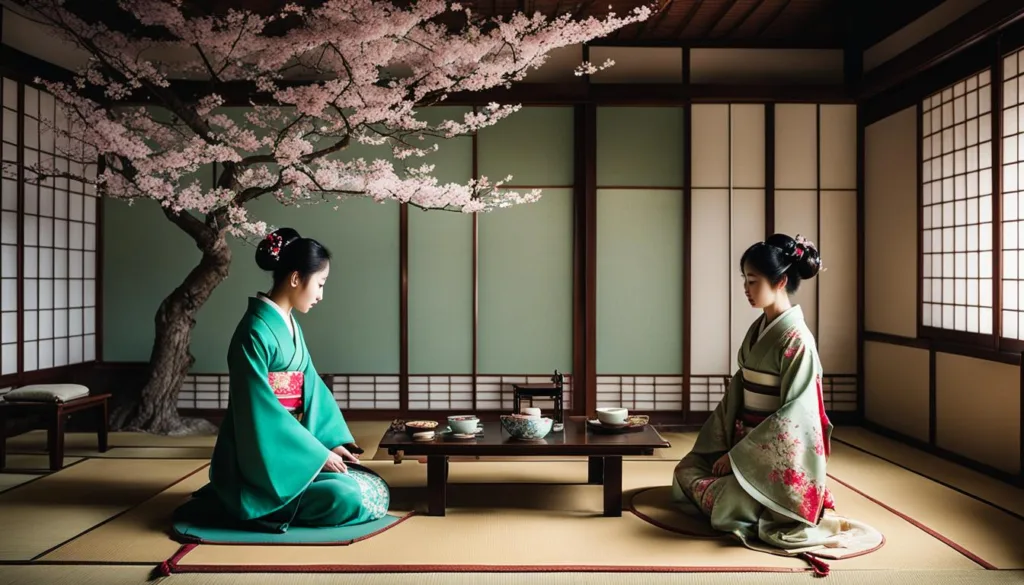
| Custom | Explanation |
|---|---|
| Bowing | Bowing is a common form of greeting and showing respect in Japan. The depth and duration of the bow depend on the situation and the person you are interacting with. |
| Shoes off indoors | It is customary to remove your shoes when entering homes, traditional inns (ryokans), temples, and some restaurants in Japan. Slippers are usually provided for indoor use. |
| Onsen etiquette | When visiting onsens (hot springs), it is important to wash your body thoroughly before entering the bath. Tattoos are generally not allowed in public baths, although some onsens provide tattoo-friendly options. |
| Respect for elders | Show respect to older individuals by using appropriate honorific titles and avoiding addressing them by their first name unless given permission to do so. |
Savoring Japanese Cuisine: A Gastronomic Adventure
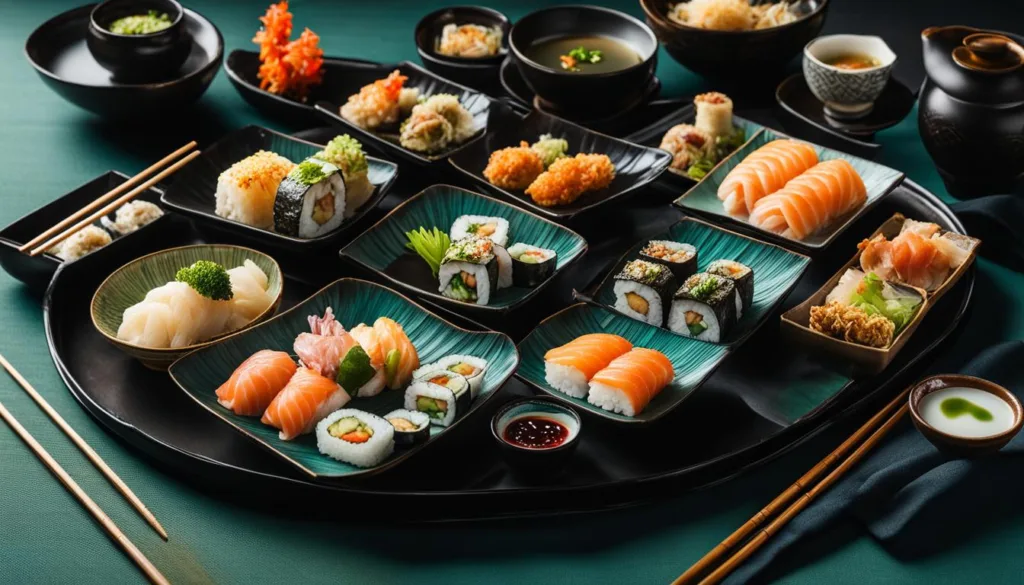
When it comes to Japanese cuisine, there is an incredible array of regional specialties to discover. From the world-famous sushi in Tokyo to the beloved ramen in Fukuoka, each city and region offers its own unique gastronomic delights. Exploring the diverse culinary landscape of Japan is a true culinary adventure, and a journey through Honshu Island will not disappoint.
In Tokyo, sushi enthusiasts can indulge in the freshest and most flavorful sushi in the world. Whether you’re dining at a high-end sushi restaurant or enjoying a casual meal at a sushi bar, the quality and craftsmanship are unparalleled. From the melt-in-your-mouth fatty tuna to the delicate flavors of sea urchin, sushi in Tokyo is an experience that should not be missed.
For ramen lovers, Fukuoka is a must-visit destination. Known as the birthplace of tonkotsu ramen, Fukuoka is renowned for its rich and creamy pork bone broth. Each bowl of ramen is carefully crafted with thin noodles, tender slices of pork, and an array of toppings. The distinct flavors and textures of Fukuoka-style ramen make it a true culinary delight.
In Kyoto, kaiseki dining takes center stage. Kaiseki is a multi-course meal that showcases the seasons and utilizes the freshest ingredients. Each dish is meticulously prepared and presented with artistic flair. From delicate sashimi to beautifully arranged seasonal vegetables, kaiseki dining in Kyoto is a feast for the senses.
| City | Regional Specialty |
|---|---|
| Tokyo | Sushi |
| Fukuoka | Ramen |
| Kyoto | Kaiseki |
| Osaka | Street Food |
In Osaka, street food takes center stage. The vibrant city is famous for its bustling food stalls and vibrant street food scene. From takoyaki (octopus balls) to okonomiyaki (savory pancakes), Osaka offers a wide variety of delicious and affordable street food options. Exploring the bustling streets and sampling a range of flavors is an essential part of any visit to Osaka.
Whether you’re a food lover or simply looking to explore the diverse culinary traditions of Japan, Honshu Island offers an abundance of gastronomic delights. From the finest sushi in Tokyo to the flavorful ramen in Fukuoka, the regional specialties of Japan will leave you craving for more. Embark on a truly unforgettable gastronomic adventure and savor the flavors of Japan.
Accommodation Options: Where to Stay in Japan
When planning a trip to Japan, choosing the right accommodation is essential for a comfortable and enjoyable stay. Japan offers a wide range of options to suit different budgets and preferences. Whether you’re looking for traditional Japanese hospitality, unique experiences, or convenient and affordable stays, there is something for everyone.
Ryokans: Immerse Yourself in Japanese Tradition
If you want to experience traditional Japanese culture and hospitality, staying at a ryokan is a must. Ryokans are traditional inns that offer an authentic Japanese experience. From sleeping on tatami mats to enjoying kaiseki meals, you’ll be transported back in time. Ryokans often have beautiful gardens, hot springs, and stunning views of nature. It’s a chance to relax and rejuvenate while experiencing the true essence of Japan.
Capsule Hotels: Unique and Budget-Friendly
For those looking for a unique and budget-friendly option, capsule hotels are a popular choice. These compact accommodations feature small, individual sleeping pods equipped with essential amenities. While the space may be limited, capsule hotels provide a convenient and affordable place to rest, especially for solo travelers or those on a tight budget. It’s an experience that you won’t find anywhere else in the world.
Business Hotels: Comfort and Convenience
If you’re looking for comfort and convenience, business hotels are a great option. These hotels cater to business travelers and offer comfortable rooms at reasonable prices. Business hotels are typically located in major cities and provide easy access to transportation and business districts. They are equipped with modern amenities and facilities to ensure a comfortable stay for both business and leisure travelers.
Airbnb: A Local and Residential Experience
For a more local and residential experience, consider staying in an Airbnb. With Airbnb, you can rent an entire apartment or stay in a private room hosted by a local. This gives you the opportunity to experience daily life in Japan and interact with locals. Airbnb listings can be found in various neighborhoods, allowing you to explore different areas of the city and discover hidden gems.
Overall, Japan offers a diverse range of accommodation options, from traditional ryokans to unique capsule hotels, convenient business hotels, and local Airbnb stays. Consider your preferences, budget, and desired experience when choosing where to stay in Japan, and make the most of your trip by immersing yourself in the country’s rich culture and hospitality.
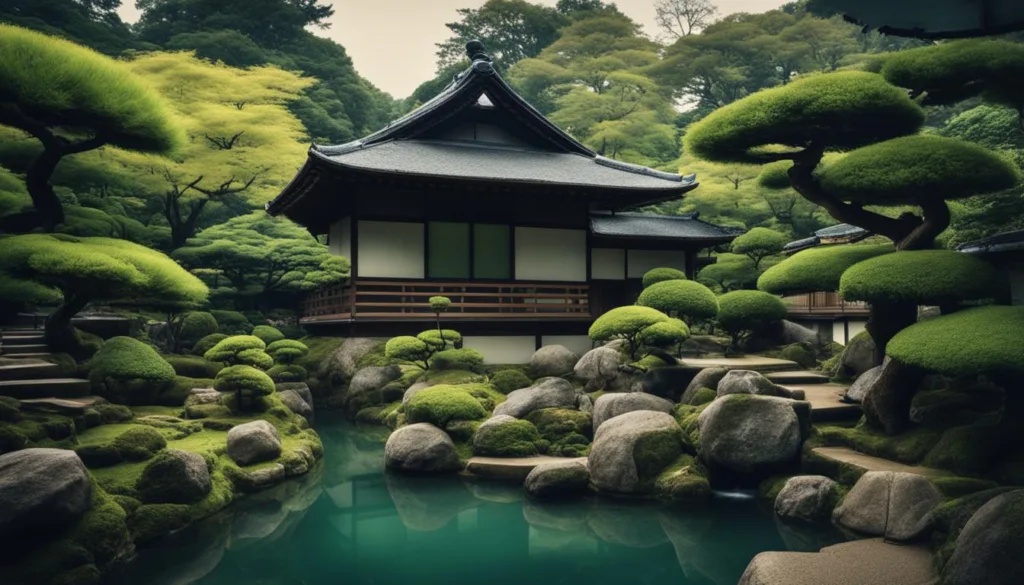
Getting Around Japan: Navigating the Transportation Network
When it comes to traveling in Japan, the transportation system is renowned for its efficiency and punctuality. Whether you’re exploring the bustling streets of Tokyo or venturing to the serene landscapes of Kyoto, understanding how to navigate Japan’s transportation network is essential for a smooth and enjoyable trip.
One of the most iconic modes of transport in Japan is the Shinkansen, also known as the bullet train. With speeds of up to 320 kilometers per hour, the Shinkansen allows you to travel quickly and comfortably between major cities. It’s a must-try experience for any visitor to Japan.
If you’re planning on traveling extensively throughout Japan, the Japan Rail Pass (JR Pass) is a convenient and cost-effective option. With the JR Pass, you’ll have unlimited travel on JR trains, including the Shinkansen, for a specified period of time. It’s a great way to save money and explore the country at your own pace.
For local transportation within cities, the metro and bus systems are reliable and convenient. Tokyo, for example, has an extensive network of subway lines that can take you to all the major attractions. Taxis are also readily available, but they can be more expensive compared to public transportation.
Table: Comparison of Transportation Options in Japan
| Transportation Option | Advantages | Disadvantages |
|---|---|---|
| Shinkansen | Fast travel between major cities | Can be expensive |
| Japan Rail Pass | Cost-effective for extensive travel | Only available to foreign tourists |
| Metro and Buses | Convenient for local transportation | Crowded during rush hours |
| Taxis | Readily available | More expensive than public transportation |
By familiarizing yourself with Japan’s transportation options, you’ll be able to navigate the country with ease and make the most of your time exploring its incredible destinations. Whether you’re hopping on a bullet train, hopping off a bus, or hailing a taxi, getting around Japan is an adventure in itself.
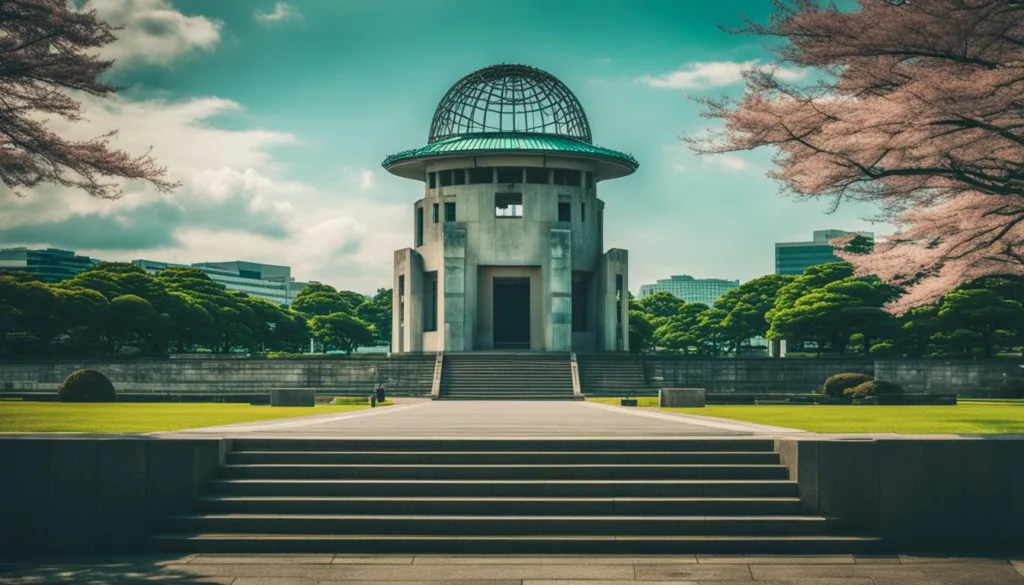
Kyoto’s Temples and Geisha Districts
Kyoto is renowned for its stunning temples and traditional geisha districts. The city is home to iconic landmarks such as Kinkaku-ji, the Golden Pavilion, and Fushimi Inari-taisha, famous for its thousands of vibrant red torii gates. Exploring these ancient temples and strolling through the historic streets of Gion, where geishas can still be spotted, offers a glimpse into Japan’s rich cultural heritage.
Tokyo Disneyland and DisneySea
A visit to Tokyo Disneyland and DisneySea is a must for fans of Disney and theme parks. These two iconic amusement parks offer a magical experience for both children and adults. Tokyo Disneyland features classic Disney characters and attractions, while DisneySea offers a unique nautical-themed park with thrilling rides and spectacular shows. Immerse yourself in the enchanting world of Disney and create unforgettable memories.
Mount Fuji
No trip to Japan is complete without a visit to Mount Fuji, the country’s tallest peak. This majestic mountain is revered as a sacred site and has inspired countless artists and poets throughout history. Whether you choose to hike to the summit or admire its beauty from afar, Mount Fuji’s iconic silhouette against a backdrop of serene landscapes is a sight to behold.
Delving Deeper: Exploring Japan’s Hidden Gems
While popular destinations are a must-visit in Japan, there are also hidden gems waiting to be explored. These lesser-known spots offer unique experiences and a chance to delve deeper into Japan’s rich culture and natural beauty.
Okinawa: A Tropical Paradise
Located in the southernmost part of Japan, Okinawa is a tropical paradise with stunning beaches and crystal-clear waters. It is famous for its unique culture, including traditional music and dance, as well as delicious cuisine. Visitors can also explore historical sites, such as the Shuri Castle, and engage in outdoor activities like snorkeling and diving.
Kanazawa: Little Kyoto
Kanazawa, known as “Little Kyoto,” is a city in Ishikawa Prefecture that offers a glimpse into Japan’s cultural heritage. It is home to beautifully preserved samurai and geisha districts, traditional tea houses, and one of Japan’s most famous gardens, Kenroku-en. The city is also renowned for its traditional crafts, such as gold leaf production and Kutani pottery.
“Kanazawa is a hidden gem with its well-preserved historical streets and beautifully designed gardens. Exploring this city felt like stepping back in time.” – Traveler’s testimonial
Naoshima: An Art Lover’s Haven
Naoshima is an island in the Seto Inland Sea that has become a haven for contemporary art enthusiasts. It is home to numerous art installations and museums, including the famous Benesse House Museum and the Chichu Art Museum. The island’s scenic landscapes and serene atmosphere provide the perfect backdrop for art appreciation.
Nara: Ancient Capital and Friendly Deer
Located just a short train ride from Kyoto, Nara is famous for its free-roaming deer and ancient sites. The city was Japan’s capital before Kyoto and is home to historic temples, including Todai-ji, which houses a massive bronze Buddha statue. Nara Park, where the friendly deer roam, offers a unique and memorable experience.
| Hidden Gem | Description |
|---|---|
| Okinawa | Tropical paradise with stunning beaches and unique culture. |
| Kanazawa | A city known as “Little Kyoto” with well-preserved samurai and geisha districts. |
| Naoshima | An island that has become an art lover’s haven with numerous contemporary art installations and museums. |
| Nara | Ancient capital famous for free-roaming deer and historic temples. |
Exploring these hidden gems will take you off the beaten path and provide a deeper understanding of Japan’s diverse offerings. From tropical beaches to ancient temples, each destination offers a unique experience that is sure to leave a lasting impression.
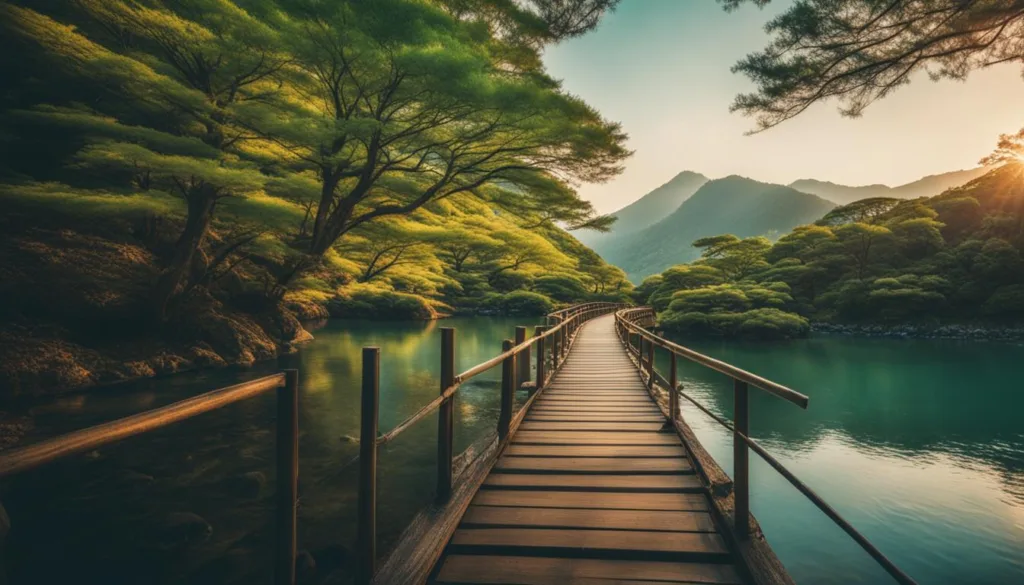
Read More: Java Island (Indonesia)
The Japanese Language: A Brief Overview
When traveling to Japan, it’s helpful to have a basic understanding of the Japanese language. While many Japanese people can speak English to some extent, knowing a few common phrases can enhance your travel experience and make communication smoother. Here are some essential phrases to get you started:
Konnichiwa – HelloArigatou – Thank youSumimasen – Excuse me, I’m sorryO-genki desu ka? – How are you?Eigo o hanashimasu ka? – Do you speak English?
In addition to learning common phrases, familiarizing yourself with basic Japanese characters can be useful. The two main phonetic scripts are hiragana and katakana, which are used for writing native Japanese words and loanwords, respectively. While mastering these scripts may take time, recognizing common characters can help you decipher signs, menus, and basic information during your trip.
If you need immediate translation assistance, there are several reliable translation apps available for smartphones. These apps can help you translate written text or even facilitate conversations by providing real-time translations. Some popular translation apps include Google Translate, Microsoft Translator, and iTranslate.
Finally, embracing Japan’s vibrant festivals and celebrations is a fantastic way to immerse yourself in the local culture. From the mesmerizing cherry blossom festivals in spring to the lively summer matsuri (festivals) and the traditional New Year festivities, experiencing these events firsthand will create lasting memories and give you a deeper appreciation for Japanese traditions.
Useful Phrases:
-
Konnichiwa – Hello
-
Arigatou – Thank you
-
Sumimasen – Excuse me, I’m sorry
-
O-genki desu ka? – How are you?
-
Eigo o hanashimasu ka? – Do you speak English?
Basic Japanese Characters:
Hiragana: あ(a), い(i), う(u), え(e), お(o)
Katakana: ア(a), イ(i), ウ(u), エ(e), オ(o)
Embracing the Japanese language, even at a basic level, can greatly enhance your travel experience in Japan. Whether it’s mastering common phrases, recognizing basic characters, or utilizing translation apps, these language tools will help you navigate your way through the country and connect with the local culture.

Regional Highlights: Chichibu, Shiga, Shinagawa, Niigata and Tsuruoka, Sapporo, Matsumoto, Kagoshima
As I delve into the wonders of Honshu Island in Japan, there are several regional highlights that deserve special recognition. Each of these destinations offers a unique blend of cultural heritage, natural landscapes, and local specialties, making them must-visit attractions on any traveler’s itinerary.
Chichibu
In the enchanting region of Chichibu, visitors are greeted with breathtaking natural scenery and rich architectural heritage. Explore the majestic Chichibu-Tama-Kai National Park, renowned for its lush forests, stunning waterfalls, and hiking trails. Don’t miss the opportunity to visit Chichibu Shrine, a place of spiritual significance nestled amidst the picturesque landscape.
Shiga
Known for its cultural landscape, Shiga is a hidden gem that offers a tranquil escape from the bustling cities. Take a leisurely stroll along the scenic shores of Lake Biwa, Japan’s largest freshwater lake. Immerse yourself in the historic charm of Hikone Castle, one of the country’s few remaining original castles. Shiga is also famous for its nourishing culinary specialties, including the beloved Omi beef and mouthwatering Omi-gyu sushi.
Shinagawa, Niigata and Tsuruoka
If you’re looking to experience authentic charm in the heart of Tokyo, Shinagawa is the place to be. This neighborhood offers a glimpse into traditional Japanese culture with its historic temples and serene gardens. Niigata and Tsuruoka, on the other hand, showcase a spiritual marriage of terroir and traditions. These regions are renowned for their sake breweries and rice paddies, providing a truly immersive cultural experience.
Sapporo, Matsumoto, and Kagoshima
Further up north, Sapporo, the capital of Hokkaido, beckons with its winter festivals and vibrant culinary scene. Explore the Sapporo Snow Festival, where you can marvel at incredible snow and ice sculptures. Matsumoto, in Nagano Prefecture, is home to the majestic Matsumoto Castle, one of Japan’s most beautiful original castles. In Kagoshima, located in southern Kyushu, you can witness the raw power of nature with its active volcano, Sakurajima, and indulge in the region’s famous black pork and sweet potato dishes.
Visiting these regional highlights will provide you with a deeper understanding of Honshu’s diverse offerings. Whether you seek natural beauty, cultural immersion, or culinary delights, these destinations are sure to leave a lasting impression.
| Region | Main Attractions | Local Specialties |
|---|---|---|
| Chichibu | Chichibu-Tama-Kai National Park, Chichibu Shrine | Chichibu soba noodles, Chichibu whisky |
| Shiga | Lake Biwa, Hikone Castle | Omi beef, Omi-gyu sushi |
| Shinagawa, Niigata and Tsuruoka | Historic temples, sake breweries, rice paddies | Niigata rice, Tsuruoka ramen |
| Sapporo, Matsumoto, Kagoshima | Sapporo Snow Festival, Matsumoto Castle, Sakurajima volcano | Sapporo beer, Shinshu apple, Kagoshima black pork |
These regional highlights offer a glimpse into the diverse attractions and cultural heritage of Honshu Island. From majestic castles to picturesque landscapes and delectable local specialties, each destination has its own unique charm waiting to be explored.

Conclusion
As I conclude this travel guide, I invite you to embark on a remarkable journey to Honshu Island in Japan. This captivating destination is a treasure trove of cultural experiences and natural wonders. Whether you’re exploring the vibrant cities, discovering the hidden gems, or indulging in the delectable cuisine, Honshu Island will leave an indelible mark on your heart.
From the bustling streets of Tokyo to the serene landscapes of Kyoto, Honshu offers a harmonious blend of tradition and modernity. Immerse yourself in the rich cultural heritage, visit ancient temples, and marvel at futuristic skyscrapers. Let your taste buds savor the exquisite flavors of sushi in Tokyo, ramen in Fukuoka, and street food in Osaka.
With a wide range of accommodation options and a well-connected transportation network, exploring Honshu Island is convenient and effortless. Don’t miss the must-see attractions like Kyoto’s temples, Tokyo Disneyland, Hiroshima Peace Memorial, and the majestic Mount Fuji. And for a more off-the-beaten-path experience, venture to Okinawa, Kanazawa, Naoshima, or Nara.
So, pack your bags, embrace the cultural etiquette, and get ready for an adventure of a lifetime in Japan. Whether you’re captivated by the stunning landscapes or fascinated by the rich history, Honshu Island promises to be a destination that will exceed your expectations. This travel guide has equipped you with all the essential information you need to create unforgettable memories in the heart of Japan.
FAQ
Is Honshu the largest island in Japan?
Yes, Honshu is the largest and most populous island in Japan.
What are some of the major cities on Honshu Island?
Tokyo, Kyoto, and Osaka are some of the vibrant cities located on Honshu Island.
What are the four main islands of Japan?
The four main islands of Japan are Honshu, Hokkaido, Kyushu, and Shikoku.
What are some cultural practices to be aware of in Japan?
Common cultural practices in Japan include bowing as a form of greeting, removing shoes indoors, understanding onsen etiquette, and showing respect for elders.
What are some popular dishes in Japan?
Sushi in Tokyo, ramen in Fukuoka, kaiseki dining in Kyoto, and street food in Osaka are some of the culinary specialties in Japan.
What are some accommodation options in Japan?
Traditional ryokans, capsule hotels, business hotels, and Airbnb are some of the accommodation options available in Japan.
What is the best way to get around Japan?
The Shinkansen, or bullet train, is the fastest way to travel between major cities in Japan. The JR Pass provides unlimited travel on JR trains. Metro and bus systems are convenient for local transportation in cities.
What are some must-see attractions in Japan?
Some must-see attractions in Japan include Kyoto’s temples and geisha districts, Tokyo Disneyland and DisneySea, Hiroshima Peace Memorial, and Mount Fuji.
Are there any hidden gems in Japan?
Yes, Okinawa, Kanazawa, Naoshima, and Nara are some of the hidden gems in Japan worth exploring.
What are some regional highlights on Honshu Island?
Chichibu, Shiga, Shinagawa, Niigata and Tsuruoka, Sapporo, Matsumoto, and Kagoshima each have their own unique attractions, such as stunning natural scenery, cultural heritage, and local specialties.


